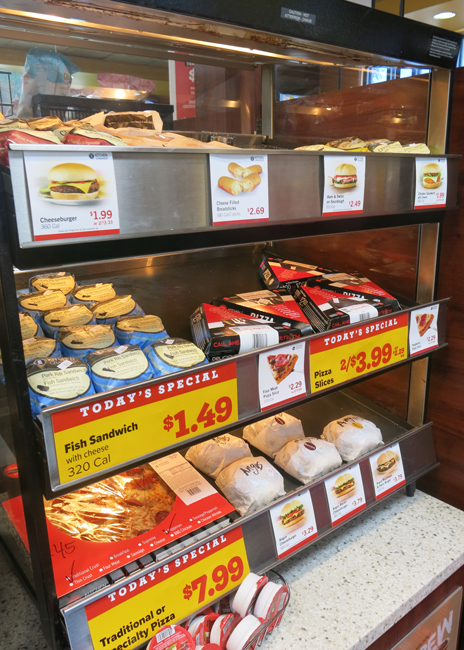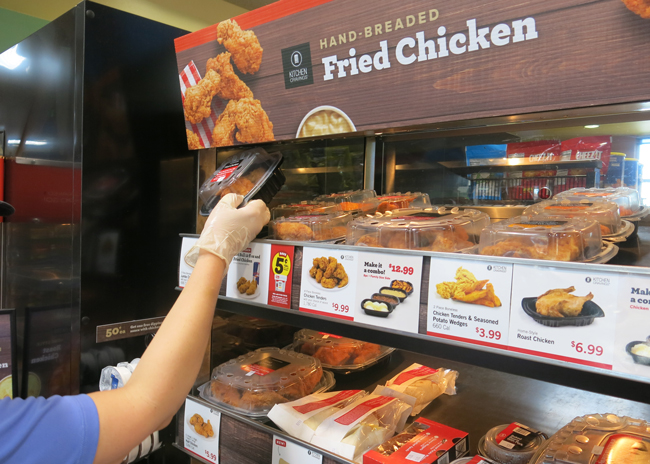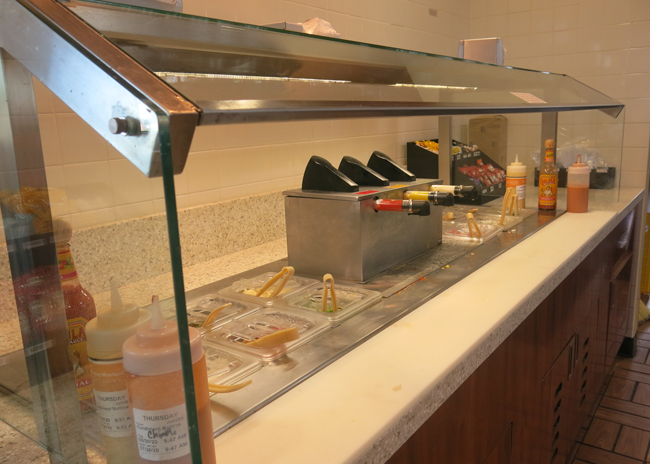Convenience stores, particularly those with a strong food focus, faced many of the same challenges as restaurants when on-premises foodservice shut down to slow the spread of the coronavirus. Self-service options, such as coffee and roller grill items, were halted, and larger chains had to manage through varying local rules.
“There was a lot of confusion with store managers in the beginning in terms of the regulations,” notes Jeff Lenard, VP, strategic industry initiatives at NACS, a Virginia-based association for convenience and fuel retailers.
C-stores did have the advantage of already being well positioned for takeout — while some c-stores do have dine-in seating options, the large majority serve to-go customers only. That’s the case for La Crosse, Wis.-based Kwik Trip, which has a food-focused model built into the chain, along with a commissary that supports the chains’ 600 stores.

“Since we produce our own milk, breads, sandwiches and pizza, we were never out of stock,” says Paul Servais, retail foodservice director for Kwik Trip. “We deliver to our stores seven days a week; every day every store gets a delivery. We were in a great position to help our communities. We have had very good sales. Our footprint, how we designed our stores, what we sell, it’s right-on for the pandemic. For a while, we could not process enough milk.”
As of mid-July, all Kwik Trip stores were back to pre-COVID-19 setups — stores in Madison, Wis., were among the last to come back fully online due to local restrictions in that county. Fully back to normal meant reinstituting self-serve options, which includes dispensed beverages, bakery cases, roller grill offerings and condiment bars. During the heightened restriction period the chain had to shut down those self-serve options. “We closed the bakery cases, shut down the roller grills and soup kettles and stopped sampling,” Servais confirms.
Kwik Trip has updated normal operating procedures around food sanitation to include wiping down foodservice-related equipment more frequently and replacing items, like tongs, more often. “Every 30 minutes,” Servais says, instead of the pre-pandemic four-hour rotation store recommendation.
“We have always had a robust food safety program since 2002 when we really got into food,” Servais says. “When COVID-19 came, it wasn’t that we had to change philosophy for cleaning, but that we had to tell the public about it — have transparency about all of it.”
The emphasis on cleanliness carries through to the c-store industry overall. One notable change among some larger c-store operators, Lenard notes, is a change in operating hours from 24/7 to 23/7, leaving a full hour to shut down and clean the store. “That might be the new norm — 23/7,” he says. “Cleanliness ranks as a top reason that consumers say they have a favorite c-store or gas station. Food safety means something broader than just related to the preparation of the food. It includes everything being clean.”
Consumer Shifts and the C-Store Model
 Notably, the coronavirus brought with it a change in consumers’ commutes to work, and buying habits prompted a shift in the c-store model. “Historically, 83% of items sold in c-stores are consumed within the hour,” explains Lenard. “That individual consumption model changed as c-store food consumers started to consider what they could bring home for everyone else. The data isn’t out yet but from what we hear from operators, COVID-19 brought with it a change in routine that meant c-store consumers started buying a whole pizza or a bucket of chicken — more of a family approach.”
Notably, the coronavirus brought with it a change in consumers’ commutes to work, and buying habits prompted a shift in the c-store model. “Historically, 83% of items sold in c-stores are consumed within the hour,” explains Lenard. “That individual consumption model changed as c-store food consumers started to consider what they could bring home for everyone else. The data isn’t out yet but from what we hear from operators, COVID-19 brought with it a change in routine that meant c-store consumers started buying a whole pizza or a bucket of chicken — more of a family approach.”
Kwik Trip has seen a consumer shift in its busy periods, with its traditional morning business to later in the day. “Morning business — breakfast and coffee — have been huge forever. All of a sudden those breakfast customers are not going to offices,” Servais says. “We are seeing a rebound of breakfast now. Lunch has started picking back up and evening.”
One of the biggest challenges at the moment, Servais notes, is the day to day inconsistency of business.

Reopening of restaurants may have an adverse impact on c-stores, according to NACS/PDI data, slowing down c-stores’ off-premises consumption of alcohol. Early on in the pandemic, Lenard notes c-stores where seeing more bulk purchase sales of alcohol. “Floor displays — generally set up as warm displays/inventory— were moving as consumers looked to maximize purchases,” he says. Other category sales were offset by the lack of options in another area, for example packaged beverage sales increased (non-alcoholic) during the period self-serve dispensed units were shutdown. “Official data has a bit of a lag time, but the most notable thing is that change in purchasing routine, moving from single-serve, immediate consumption to take-home.”
From a larger perspective, that buying shift, Lenard believes, could further blur the channel segmentation. “We’ve talked about channel blurring for years,” he says. “Now, consumers may just say ‘I’m going out for pizza’ and leave it at that.” He adds that the current retail foodservice climate may also open up new opportunities for any retailer to work with someone they have never worked with before. “One c-store retailer was working with a restaurant that was closed in a supply partnership approach; another option might be a restaurant working within a c-store for a grab-and-go offer; there’s also the possibility of a community element with partnering for food banks [c-stores traditionally are deemed too small of a pickup for a food bank on their own]. These are terrible times, but there are also some innovative ideas emerging.”




